
Revisiting and remastering two 1958 albums on the Riverside Label (Monk in Action and Misterioso), then remastered as At The Five Spot on Milestone in 1977, this quartet show a different take on Monk's music through the authoritative playing and interpretations of Monk's music by tenor saxophonist Johnny Griffin, intensified by drummer Roy Haynes and bassist Ahmed Abdul-Malik's solid support.
In Stock
Quantity in Basket: None
Log In to use our Wish List
Shipping Weight: 3.00 units
EU & UK Customers:
Discogs.com can handle your VAT payments
So please order through Discogs
Sample The Album:
Johnny Griffin-tenor saxophone
Thelonious Monk-piano
Ahmed Abdul-Malik-double bass
Roy Haynes-drums
Click an artist name above to see in-stock items for that artist.
UPC: 752156114727
Label: ezz-thetics by Hat Hut Records Ltd
Catalog ID: ezz-thetics 1147
Squidco Product Code: 32730
Format: CD
Condition: New
Released: 2022
Country: Switzerland
Packaging: Cardboard Gatefold
Recorded at Five Spot Cafe, in NYC, on August 7th, 1958.
Originally issued in 1958 as a vinyl LP on the Riverside Records label As Thelonious In Action with catalog code RLP 12-262 and as Misterioso with catalog code RLP 12-279.
"Monk is Monk, was and ever shall be, according to the recordings and films that have survived him, and secure our experience of his unique and consistent creativity. Nevertheless, as the context changes our perspective shifts, given the interactive qualities and individual contributions of the participants in any jazz ensemble. In this case, we have a one-time document, the only known recording of Monk working in a live performance with these particular musicians. How did it come to be, and what makes it special?
Over the years, it seems Monk chose the members of his working bands for reasons of comfort and contrast, familiarity and availability. If we pick up his story in 1957, Monk had been recording for Riverside for two years, his Blue Note and Prestige days behind him, and he had recently regained his cabaret card, necessary for performing in New York City clubs - although offers for appearances were at first few and far between. A fortunate long-term gig began in July 1957 at the Five Spot, which had initially opened as a small neighborhood hangout for artists and writers, but by this time had presented Cecil Taylor (unknown and just beginning his career), the equally youthful pianist Randy Weston, and Charles Mingus' Jazz Workshop. Monk's quartet consisted of the still-impressionable John Coltrane on tenor saxophone, bassist Wilbur Ware, and drummer Shadow Wilson. Ware was Monk's first-call bassist, but when he failed to show one night, he was replaced by Ahmed Abdul-Malik.
Ahmed Abdul-Malik was a converted Muslim and Brooklyn native who had previously played with Randy Weston, and shared with him an interest in North African and Arabic music and culture; he learned to play violin, cello, and oud, and later in 1958 recorded the first of two albums that brilliantly combined jazz with African and Middle Eastern sources. He was still a part of Monk's band when it was re-hired at the Five Spot in June 1958. This time, Monk chose Roy Haynes to play drums. Haynes, then 33 years old, was already established as one of the most dynamic drummers of his generation, having worked with Lester Young, Charlie Parker, Bud Powell, Stan Getz, and Sonny Rollins prior to this. With both of his preferred saxophonists, Rollins and Coltrane, unavailable, Monk turned to Johnny Griffin, who proved to be the group's wild card.
Griffin was no novice. Starting out in the rhythm-and-blues-fueled bands of Lionel Hampton, Joe Morris and Wynonie Harris, Griffin released his debut discs for Blue Note and Argo in 1956 - the latter with Wilbur Ware on bass, who was to use Griffin on his own exciting album, The Chicago Sound, for Riverside the next year. 1957 found Griffin in demand and among fast company; he recorded his second quartet album for Blue Note and was the nominal leader of A Blowing Session, a combustible three-tenor excursion with Coltrane and Hank Mobley; and joined Art Blakey's Jazz Messengers, as part of no less than seven recording sessions that year - most notably one for Atlantic that featured guest artist Thelonious Monk.
Monk's familiarity with and appreciation of Griffin playing his compositions so well on the Atlantic date no doubt led to his being called for an ill-fated studio session nine months later, in February 1958, which Monk cancelled after the band struggled with a single tune, the newly composed "Coming on the Hudson" - and then again in June, for the Five Spot residency. (These experiences left a permanent mark on Griffin, as he frequently dropped Monk tunes into his repertoire for the rest of his career; recorded an entire Monk program (Lookin' at Monk for the Jazzland label) in 1961 during his popular partnership with fellow rambunctious tenorman Eddie "Lockjaw" Davis; and reunited with Monk for a series of European concerts in 1967.)
Griffin came to Monk with a reputation as a speed demon - double-timing the tempo was his default mechanism, elaborating melodies with a mixture of mellow swing and complex bop phrasing, and impishly inserting song quotes a la Rollins and Dexter Gordon. "Rhythm-a-ning" here becomes a quote-fest: "Love in Bloom," "Jumpin' with Symphony Sid," "Fascinatin' Rhythm," "Swingin' on a Star," and Mendelssohn's "Wedding March" are tossed into the fray, colliding with Monk's wry solo construction on his opening theme and repeated descending lines. Their contrasting nature - Griffin's fluid extravagance and Monk's percussive dissections - intensified by Haynes' forceful divisions of the beat, generate a tension unlike any of Monk's subsequent groups. "Let's Cool One" is a case in point; Griffin concocts a shrewd solo that pushes the unassuming melody to extremes, and the entire rhythm section drops out, allowing the tenor saxist to hover, freely, out in empty space.
Alas, the summer ended and Griffin left the band, citing financial woes. He was replaced, briefly, first by Coltrane, then Rollins, until October 1958 when Sonny suggested a new replacement, Charlie Rouse, and the next chapter in the Monk saga was written."-Art Lange, Chicago, October 2022

The Squid's Ear!
Artist Biographies
• Show Bio for Johnny Griffin "John Arnold Griffin III (April 24, 1928 - July 25, 2008) was an American jazz tenor saxophonist. Nicknamed "the Little Giant" for his short stature and forceful playing, Griffin's career began in the mid-1940s and continued until the month of his death. A pioneering figure in hard bop, Griffin recorded prolifically as a bandleader in addition to stints with pianist Thelonious Monk, drummer Art Blakey, in partnership with fellow tenor Eddie "Lockjaw" Davis and as a member of the Kenny Clarke/Francy Boland Big Band after he moved to Europe in the 1960s. In 1995, Griffin was awarded an Honorary Doctorate of Music from Berklee College of Music. Griffin studied music at DuSable High School in Chicago under Walter Dyett, starting out on clarinet before moving on to oboe and then alto saxophone. While still at high school at the age of 15, Griffin was playing with T-Bone Walker in a band led by Walker's brother. Alto saxophone was still his instrument of choice when he joined Lionel Hampton's big band, three days after his high school graduation, but Hampton encouraged him to take up the tenor, playing alongside Arnett Cobb. He first appeared on a Los Angeles recording with Hampton's band in 1945 at the age of 17. By mid-1947, Griffin and fellow Hampton band member Joe Morris, had formed a sextet made up of local musicians, including George Freeman, where he remained for the next two years. His playing can be heard on early rhythm and blues recordings for Atlantic Records. By 1951, Griffin was playing baritone saxophone in an R&B septet led by former bandmate Arnett Cobb. After returning to Chicago from two years in the Army, Griffin began to establish a reputation as one of the premiere saxophonists in that city. Thelonious Monk enthusiastically encouraged Orrin Keepnews of the Riverside label to sign the young tenor, but before he could act Blue Note had signed Griffin. He joined Art Blakey's Jazz Messengers in 1957, and his recordings from that time include an album joining together the Messengers and Thelonious Monk. Griffin then succeeded John Coltrane as a member of Monk's Five Spot quartet; he can be heard on the albums Thelonious in Action and Misterioso. Griffin's unique style, based on an astounding technique, included a vast canon of bebop language. He was known to quote generously from classical, opera and other musical forms. A prodigious player, he was often subjected to "cutting sessions" (a musical battle between two musicians) involving a legion of tenor players, both in his hometown Chicago with Hank Mobley and Gene Ammons, and on the road. Diminutive, he was distinctive as a fashionable dresser, a good businessman, and a well-liked bandleader to other musicians.Johnny Griffin backstage at Bach Dancing & Dynamite Society, Half Moon Bay, California, 1985 Griffin was leader on his first Blue Note album Introducing Johnny Griffin in 1956. Also featuring Wynton Kelly on piano, Curly Russell on bass and Max Roach on drums, the recording brought Griffin critical acclaim. The album A Blowin' Session (1957) featured John Coltrane and Hank Mobley. He played with Art Blakey's Jazz Messengers for a few months in 1957 and in the Thelonious Monk Sextet and Quartet (1958). During this period, he recorded a set with Clark Terry on Serenade to a Bus Seat, featuring the rhythm trio of Wynton Kelly, Paul Chambers, and Philly Joe Jones. Griffin moved to France in 1963 and to the Netherlands in 1978. His relocation was the result of several factors, including income tax problems, a failing marriage and feeling "embittered by the critical acceptance of free jazz" in the United States, as journalist Ben Ratliff wrote. Apart from appearing regularly under his own name at jazz clubs such as London's Ronnie Scott's, Griffin became a "first choice" sax player for visiting US musicians touring the continent during the 1960s and 1970s. In 1965, he recorded albums with Wes Montgomery. He briefly rejoined Monk's groups (an Octet and Nonet) in 1967. From 1967 to 1969, he was part of the Kenny Clarke/Francy Boland Big Band. Griffin and Davis met up again in 1970 and recorded Tough Tenors Again 'n' Again, and again with the Dizzy Gillespie Big 7 at the Montreux Jazz Festival. In the late 1970s, Griffin recorded with Peter Herbolzheimer and His Big Band, which also included, among others, Nat Adderley, Derek Watkins, Art Farmer, Slide Hampton, Jiggs Whigham, Herb Geller, Wilton Gaynair, Stan Getz, Gerry Mulligan, Rita Reys, Jean "Toots" Thielemans, Niels-Henning Ørsted Pedersen, Grady Tate, and Quincy Jones as arranger. He also recorded with the Nat Adderley Quintet in 1978, having previously recorded with Adderley in 1958. In 1978, Griffin and Dexter Gordon returned to the U.S., and the two performed at the Ann Arbor Blues and Jazz Festival, before recording Live at Carnegie Hall. Griffin's last concert was in Hyères, France on July 21, 2008. On July 25, 2008, he died of a heart attack at the age of 80 in Mauprévoir, near Availles-Limouzine, France." ^ Hide Bio for Johnny Griffin • Show Bio for Thelonious Monk "Thelonious Sphere Monk. October 10, 1917-February 17, 1982. With the arrival Thelonious Sphere Monk, modern music-let alone modern culture--simply hasn't been the same. Recognized as one of the most inventive pianists of any musical genre, Monk achieved a startlingly original sound that even his most devoted followers have been unable to successfully imitate. His musical vision was both ahead of its time and deeply rooted in tradition, spanning the entire history of the music from the "stride" masters of James P. Johnson and Willie "the Lion" Smith to the tonal freedom and kinetics of the "avant garde." And he shares with Edward "Duke" Ellington the distinction of being one of the century's greatest American composers. At the same time, his commitment to originality in all aspects of life-in fashion, in his creative use of language and economy of words, in his biting humor, even in the way he danced away from the piano-has led fans and detractors alike to call him "eccentric," "mad" or even "taciturn." Consequently, Monk has become perhaps the most talked about and least understood artist in the history of jazz. Born on October 10, 1917, in Rocky Mount, North Carolina, Thelonious was only four when his mother and his two siblings, Marion and Thomas, moved to New York City. Unlike other Southern migrants who headed straight to Harlem, the Monks settled on West 63rd Street in the "San Juan Hill" neighborhood of Manhattan, near the Hudson River. His father, Thelonious, Sr., joined the family three years later, but health considerations forced him to return to North Carolina. During his stay, however, he often played the harmonica, 'Jew's harp," and piano-all of which probably influenced his son's unyielding musical interests. Young Monk turned out to be a musical prodigy in addition to a good student and a fine athlete. He studied the trumpet briefly but began exploring the piano at age nine. He was about nine when Marion's piano teacher took Thelonious on as a student. By his early teens, he was playing rent parties, sitting in on organ and piano at a local Baptist church, and was reputed to have won several "amateur hour" competitions at the Apollo Theater. ,Admitted to Peter Stuyvesant, one of the city's best high schools, Monk dropped out at the end of his sophomore year to pursue music and around 1935 took a job as a pianist for a traveling evangelist and faith healer. Returning after two years, he formed his own quartet and played local bars and small clubs until the spring of 1941, when drummer Kenny Clarke hired him as the house pianist at Minton's Playhouse in Harlem. Minton's, legend has it, was where the "bebop revolution" began. The after-hours jam sessions at Minton's, along with similar musical gatherings at Monroe's Uptown House, Dan Wall's Chili Shack, among others, attracted a new generation of musicians brimming with fresh ideas about harmony and rhythm-notably Charlie Parker, Dizzy Gillespie, Mary Lou Williams, Kenny Clarke, Oscar Pettiford, Max Roach, Tadd Dameron, and Monk's close friend and fellow pianist, Bud Powell. Monk's harmonic innovations proved fundamental to the development of modern jazz in this period. Anointed by some critics as the "High Priest of Bebop," several of his compositions ("52nd Street Theme," "Round Midnight," "Epistrophy" [co-written with Kenny Clarke and originally titled "Fly Right" and then "Iambic Pentameter"], "I Mean You") were favorites among his contemporaries. Thelonious Monk StyleYet, as much as Monk helped usher in the bebop revolution, he also charted a new course for modern music few were willing to follow. Whereas most pianists of the bebop era played sparse chords in the left hand and emphasized fast, even eighth and sixteenth notes in the right hand, Monk combined an active right hand with an equally active left hand, fusing stride and angular rhythms that utilized the entire keyboard. And in an era when fast, dense, virtuosic solos were the order of the day, Monk was famous for his use of space and silence. In addition to his unique phrasing and economy of notes, Monk would "lay out" pretty regularly, enabling his sidemen to experiment free of the piano's fixed pitches. As a composer, Monk was less interested in writing new melodic lines over popular chord progressions than in creating a whole new architecture for his music, one in which harmony and rhythm melded seamlessly with the melody. "Everything I play is different," Monk once explained, "different melody, different harmony, different structure. Each piece is different from the other. . . . [W]hen the song tells a story, when it gets a certain sound, then it's through . . . completed." ,Despite his contribution to the early development of modern jazz, Monk remained fairly marginal during the 1940s and early 1950s. Besides occasional gigs with bands led by Kenny Clarke, Lucky Millinder, Kermit Scott, and Skippy Williams, in 1944 tenor saxophonist Coleman Hawkins was the first to hire Monk for a lengthy engagement and the first to record with him. Most critics and many musicians were initially hostile to Monk's sound. Blue Note, then a small record label, was the first to sign him to a contract. Thus, by the time he went into the studio to lead his first recording session in 1947, he was already thirty years old and a veteran of the jazz scene for nearly half of his life. But he knew the scene and during the initial two years with Blue Note had hired musicians whom he believed could deliver. Most were not big names at the time but they proved to be outstanding musicians, including trumpeters Idrees Sulieman and George Taitt; twenty-two year-old Sahib Shihab and seventeen-year-old Danny Quebec West on alto saxophones; Billy Smith on tenor; and bassists Gene Ramey and John Simmons. On some recordings Monk employed veteran Count Basie drummer Rossiere "Shadow" Wilson; on others, the drum seat was held by well-known bopper Art Blakey. His last Blue Note session as a leader in 1952 finds Monk surrounded by an all-star band, including Kenny Dorham (trumpet), Lou Donaldson (alto), "Lucky" Thompson (tenor), Nelson Boyd (bass), and Max Roach (drums). In the end, although all of Monk's Blue Note sides are hailed today as some of his greatest recordings, at the time of their release in the late 1940s and early 1950s, they proved to be a commercial failure. Harsh, ill-informed criticism limited Monk's opportunities to work-opportunities he desperately needed especially after his marriage to Nellie Smith in 1947, and the birth of his son, Thelonious, Jr., in 1949. Monk found work where he could, but he never compromised his musical vision. His already precarious financial situation took a turn for the worse in August of 1951, when he was falsely arrested for narcotics possession, essentially taking the rap for his friend Bud Powell. Deprived of his cabaret card-a police-issued "license" without which jazz musicians could not perform in New York clubs-Monk was denied gigs in his home town for the next six years. Nevertheless, he played neighborhood clubs in Brooklyn-most notably, Tony's Club Grandean, sporadic concerts, took out-of-town gigs, composed new music, and made several trio and ensemble records under the Prestige Label (1952-1954), which included memorable performances with Sonny Rollins, Miles Davis, and Milt Jackson. In the fall of1953, he celebrated the birth of his daughter Barbara, and the following summer he crossed the Atlantic for the first time to play the Paris Jazz Festival. During his stay, he recorded his first solo album for Vogue. These recordings would begin to establish Monk as one of the century's most imaginative solo pianists. In 1955, Monk signed with a new label, Riverside, and recorded several outstanding LP's which garnered critical attention, notably Thelonious Monk Plays Duke Ellington, The Unique Thelonious Monk, Brilliant Corners, Monk's Music and his second solo album, Thelonious Monk Alone. In 1957, with the help of his friend and sometime patron, the Baroness Pannonica de Koenigswarter, he had finally gotten his cabaret card restored and enjoyed a very long and successful engagement at the Five Spot Café with John Coltrane on tenor saxophone, Wilbur Ware and then Ahmed Abdul-Malik on bass, and Shadow Wilson on drums. From that point on, his career began to soar; his collaborations with Johnny Griffin, Sonny Rollins, Art Blakey, Clark Terry, Gerry Mulligan, and arranger Hall Overton, among others, were lauded by critics and studied by conservatory students. Monk even led a successful big band at Town Hall in 1959. It was as if jazz audiences had finally caught up to Monk's music. By 1961, Monk had established a more or less permanent quartet consisting of Charlie Rouse on tenor saxophone, John Ore (later Butch Warren and then Larry Gales) on bass, and Frankie Dunlop (later Ben Riley) on drums. He performed with his own big band at Lincoln Center (1963), and at the Monterey Jazz Festival, and the quartet toured Europe in 1961 and Japan in 1963. In 1962, Monk had also signed with Columbia records, one of the biggest labels in the world, and in February of 1964 he became the third jazz musician in history to grace the cover of Time Magazine. However, with fame came the media's growing fascination with Monk's alleged eccentricities. Stories of his behavior on and off the bandstand often overshadowed serious commentary about his music. The media helped invent the mythical Monk-the reclusive, naïve, idiot savant whose musical ideas were supposed to be entirely intuitive rather than the product of intensive study, knowledge and practice. Indeed, his reputation as a recluse (Time called him the "loneliest Monk") reveals just how much Monk had been misunderstood. As his former sideman, tenor saxophonist Johnny Griffin, explained, Monk was somewhat of a homebody: "If Monk isn't working he isn't on the scene. Monk stays home. He goes away and rests." Unlike the popular stereotypes of the jazz musician, Monk was devoted to his family. He appeared at family events, played birthday parties, and wrote playfully complex songs for his children: "Little Rootie Tootie" for his son, "Boo Boo's Birthday" and "Green Chimneys" for his daughter, and a Christmas song titled "A Merrier Christmas." The fact is, the Monk family held together despite long stretches without work, severe money shortages, sustained attacks by critics, grueling road trips, bouts with illness, and the loss of close friends. During the 1960s, Monk scored notable successes with albums such as Criss Cross, Monk's Dream, It's Monk Time, Straight No Chaser, and Underground. But as Columbia/CBS records pursued a younger, rock-oriented audience, Monk and other jazz musicians ceased to be a priority for the label. Monk's final recording with Columbia was a big band session with Oliver Nelson's Orchestra in November of 1968, which turned out to be both an artistic and commercial failure. Columbia's disinterest and Monk's deteriorating health kept the pianist out of the studio. In January of 1970, Charlie Rouse left the band, and two years later Columbia quietly dropped Monk from its roster. For the next few years, Monk accepted fewer engagements and recorded even less. His quartet featured saxophonists Pat Patrick and Paul Jeffrey, and his son Thelonious, Jr., took over on drums in 1971. That same year through 1972, Monk toured widely with the "Giants of Jazz," a kind of bop revival group consisting of Dizzy Gillespie, Kai Winding, Sonny Stitt, Al McKibbon and Art Blakey, and made his final public appearance in July of 1976. Physical illness, fatigue, and perhaps sheer creative exhaustion convinced Monk to give up playing altogether. On February 5, 1982, he suffered a stroke and never regained consciousness; twelve days later, on February 17th, he died. Today Thelonious Monk is widely accepted as a genuine master of American music. His compositions constitute the core of jazz repertory and are performed by artists from many different genres. He is the subject of award winning documentaries, biographies and scholarly studies, prime time television tributes, and he even has an Institute created in his name. The Thelonious Monk Institute of Jazz was created to promote jazz education and to train and encourage new generations of musicians. It is a fitting tribute to an artist who was always willing to share his musical knowledge with others but expected originality in return."-Robin D. G. Kelley Ph.D. ^ Hide Bio for Thelonious Monk • Show Bio for Ahmed Abdul-Malik "Ahmed Abdul-Malik (born Jonathan Tim, Jr.; January 30, 1927 - October 2, 1993) was an American jazz double bassist and oud player. Abdul-Malik is remembered for integrating Middle Eastern and North African music styles in his jazz music. He was a bass player for Art Blakey, Earl Hines, Randy Weston, and Thelonious Monk, among others. Abdul-Malik was most active as a jazz musician from the mid-1950s to the mid-1960s. He recorded half a dozen albums as leader, which have been described as containing a "refreshing" fusion of jazz with Arabic and African music. During this time he was also described as "a hard bop bassist of some distinction". As an oud player he did a tour of South America for the United States Department of State and performed at an African jazz festival in Morocco." ^ Hide Bio for Ahmed Abdul-Malik • Show Bio for Roy Haynes "Roy Owen Haynes (born March 13, 1925) is an American jazz drummer. He is among the most recorded drummers in jazz. In a career lasting over 75 years he has played swing, bebop, jazz fusion, avant-garde jazz and is considered the father of modern jazz drumming. "Snap Crackle" was a nickname given to him in the 1950s. He has led bands such as the Hip Ensemble. His albums Fountain of Youth and Whereas were nominated for a Grammy Award. He was inducted into the Modern Drummer Hall of Fame in 1999. His son Graham Haynes is a cornetist; his son Craig Holiday Haynes and grandson Marcus Gilmore are both drummers. " ^ Hide Bio for Roy Haynes
12/17/2025
Have a better biography or biography source? Please Contact Us so that we can update this biography.
12/17/2025
Have a better biography or biography source? Please Contact Us so that we can update this biography.
12/17/2025
Have a better biography or biography source? Please Contact Us so that we can update this biography.
12/17/2025
Have a better biography or biography source? Please Contact Us so that we can update this biography.
Track Listing:
1. Light Blue 5:16
2. Coming On The Hudson 5:25
3. Rhythm-A-Ning 8:41
4. Blue Monk 8:07
5. Evidence 8:37
6. Nutty 5:24
7. Blues Five Spot 7:50
8. Let's Cool One 9:15
9. In Walked Bud 10:25
10. Misterioso 10:56
Hat Art
Improvised Music
Jazz
Melodic and Lyrical Jazz
Quartet Recordings
Jazz Reissues
New in Improvised Music
Hat Hut Masters Sale
Search for other titles on the label:
ezz-thetics by Hat Hut Records Ltd.







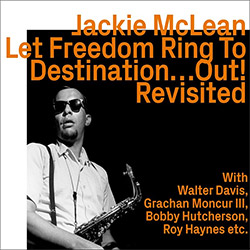



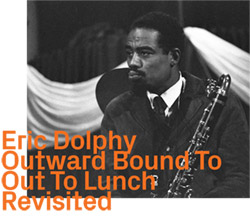

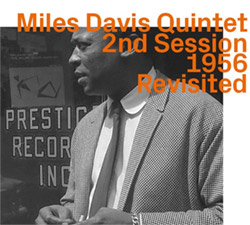

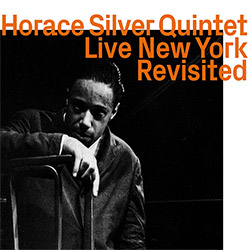
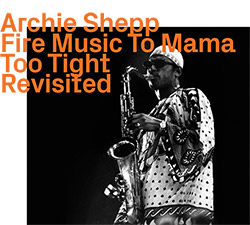
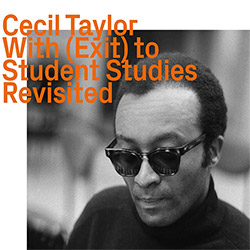

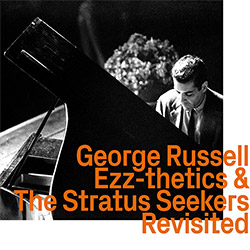
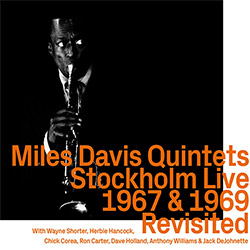


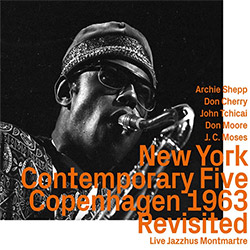

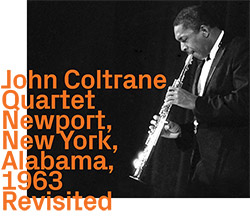

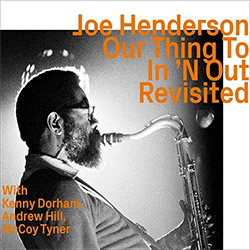

![HobbyHouse (Mia Dyberg / Axel Filip): HobbyHouse [CD + DOWNLOAD]](https://www.teuthida.com/productImages/misc4/36944.jpg)
![Mines, Kelsey / Erin Rogers: Scratching At The Surface [CD + DOWNLOAD]](https://www.teuthida.com/productImages/misc4/36945.jpg)
![Nebbia, Camila (feat/ Marilyn Crispell / Lesley Mok): A Reflection Distorts Over Water [CD + DOWNLOAD]](https://www.teuthida.com/productImages/misc4/36946.jpg)
![Vanheerentals, Adia: Taking Place [CD + DOWNLOAD]](https://www.teuthida.com/productImages/misc4/36947.jpg)
![Mines, Kelsey / Vinny Golia: Collusion and Collaboration [CD + DOWNLOAD]](https://www.teuthida.com/productImages/misc4/36948.jpg)
![Parkins, Zeena: Lament For The Maker [CD + DOWNLOAD]](https://www.teuthida.com/productImages/misc4/36949.jpg)
![Evans, Peter / Mike Pride : A Window, Basically [CD + DOWNLOAD]](https://www.teuthida.com/productImages/misc4/36950.jpg)


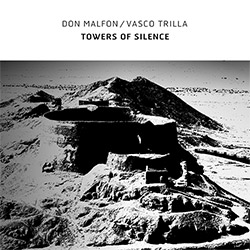

![Frey, Jurg : Composer, Alone [3 CDs]](https://www.teuthida.com/productImages/misc4/36927.jpg)
![Belorukov, Ilia / Alex Riva: Wrestling For Futility [CASSETTE w/DOWNLOAD]](https://www.teuthida.com/productImages/misc4/36994.jpg)
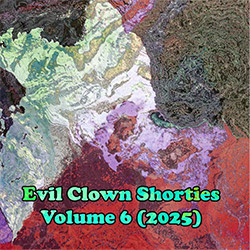
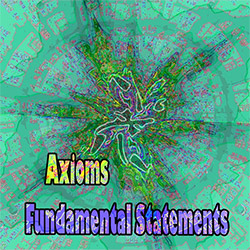
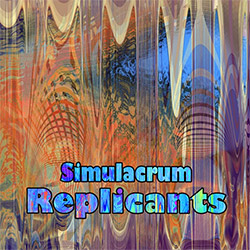
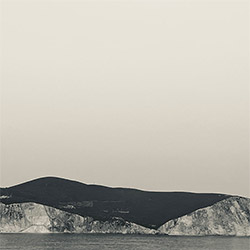





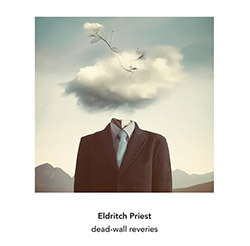


![Agnel, Sophie: Learning [VINYL]](https://www.teuthida.com/productImages/misc4/36841.jpg)

![Monaco, Amanda (w/ Michael Attias / Sean Conly / Satoshi Takeishi) : Deathblow [VINYL+ DOWNLOAD]](https://www.teuthida.com/productImages/misc4/36956.jpg)
![Frey, Jurg with ensemble]h[iatus: Je Laisse A La Nuit Son Poids D](https://www.teuthida.com/productImages/misc4/36988.jpg)

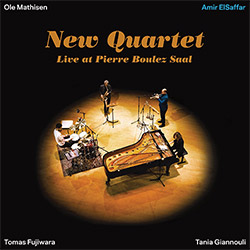
![ElSaffar, Amir / New Quartet : Live at Pierre Boulez Saal [VINYL]](https://www.teuthida.com/productImages/misc4/36830.jpg)


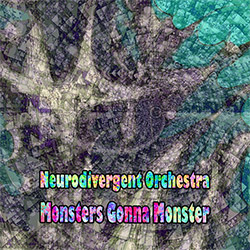

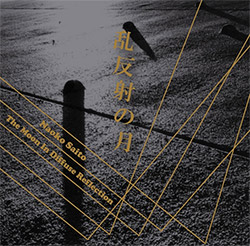
![Musicworks Magazine: #152 Fall 25 [MAGAZINE + CD]](https://www.teuthida.com/productImages/misc4/37004.jpg)



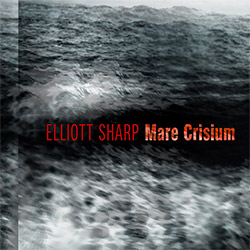


![[ahmed] (Thomas / Grip / Gerbal / Wright): Sama](https://www.teuthida.com/productImages/misc4/36976.jpg)
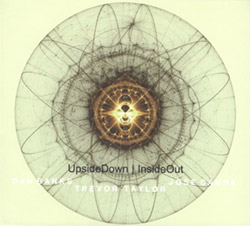
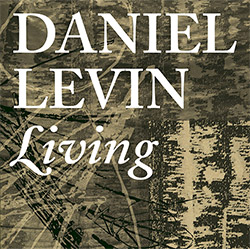
![Cleaver, Gerald / Brandon Lopez / Hprizm: In The Wilderness [COLOR VINYL]](https://www.teuthida.com/productImages/misc4/33060.jpg)
![McPhee, Joe : Defiant Jazz: a Joe McPhee Taster [VINYL]](https://www.teuthida.com/productImages/misc4/36859.jpg)
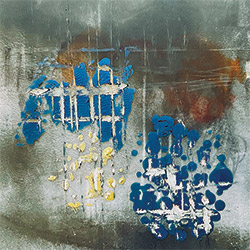
![Mateen, Sabir / Patrick Holmes / Federico Ughi : Survival Situation [LTD VINYL LP + DOWNLOAD]](https://www.teuthida.com/productImages/misc4/29891.jpg)
![Tucker, Dave / Pat Thomas / Thurston Moore / Mark Sanders: Educated Guess Vol. 1 [COLORED VINYL]](https://www.teuthida.com/productImages/misc4/30183.jpg)
![Sarian, Michael / Matthew Putman: A Lifeboat (Part I) [COLORED VINYL]](https://www.teuthida.com/productImages/misc4/30426.jpg)

![Genthon, Anouck / Lionel Marchetti: Suite Blanche [2 CDs]](https://www.teuthida.com/productImages/misc4/36642.jpg)
![Toeplitz, Kasper T.: Erosions Programmees [CD + BOOKLET]](https://www.teuthida.com/productImages/misc4/36639.jpg)
![Gate, The : Amost Live [CASSETTE + MAGAZINE]](https://www.teuthida.com/productImages/misc4/36836.jpg)
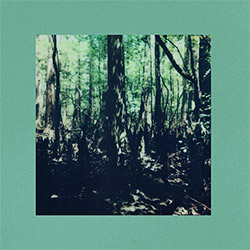





![A Magic Whistle: The Solar Cell [VINYL]](https://www.teuthida.com/productImages/misc4/36658.jpg)

![McGee, Hal: Columbus Expedition [Cassette w/ Download]](https://www.teuthida.com/productImages/misc4/36650.jpg)
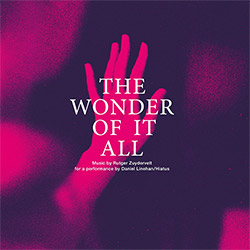
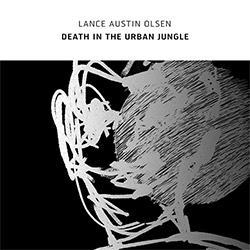
![Jaeger, Kassel: Fernweh [VINYL 2 LPs]](https://www.teuthida.com/productImages/misc4/36541.jpg)





![+DOG+: The Light Of Our Lives [2 CDs]](https://www.teuthida.com/productImages/misc4/36009.jpg)


![Eternities: Rides Again [CASSETTE]](https://www.teuthida.com/productImages/misc4/36247.jpg)

![Lopez, Francisco: Untitled (2021-2022) [2 CDs]](https://www.teuthida.com/productImages/misc4/36438.jpg)



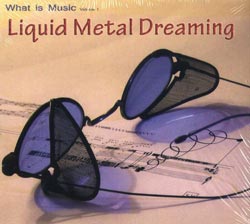

![Pisaro-Liu, Michael: Within (2) / Appearance (2) [2 CDs]](https://www.teuthida.com/productImages/misc4/36831.jpg)
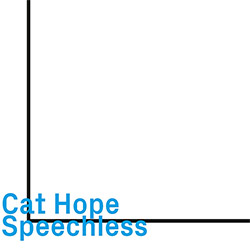
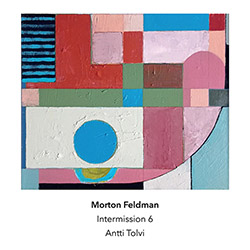



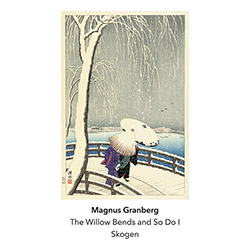
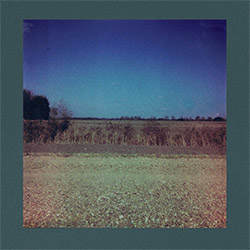

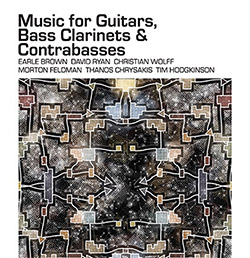
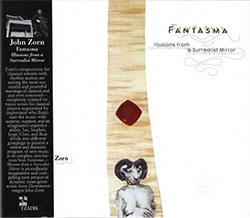
![Musicworks Magazine: #151 Summer 25 [MAGAZINE + CD]](https://www.teuthida.com/productImages/misc4/36559.jpg)

![Brown, Dan / Dan Reynolds: Live At The Grange Hall [unauthorized][CASSETTE]](https://www.teuthida.com/productImages/misc4/36245.jpg)


![Zorn, John: The Song of Songs [CD + CD BOOK]](https://www.teuthida.com/productImages/misc4/36923.jpg)
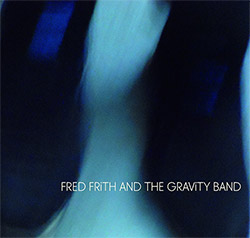
![Coultrain: Mundus [COLORED VINYL]](https://www.teuthida.com/productImages/misc4/33056.jpg)
![Hprizm: Signs Remixed [COLORED VINYL]](https://www.teuthida.com/productImages/misc4/30635.jpg)
![Halls Of the Machine: All Tribal Dignitaries [CASSETTE w/ DOWNLOAD]](https://www.teuthida.com/productImages/misc4/36134.jpg)
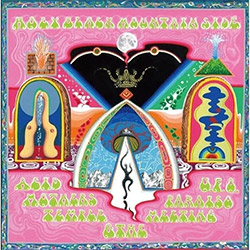
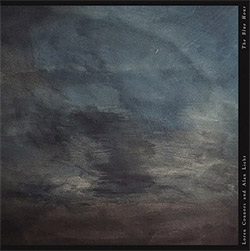

![Koenjihyakkei: Live at Club Goodman [2 CDs]](https://www.teuthida.com/productImages/misc4/36111.jpg)

![Sorry For Laughing (G. Whitlow / M. Bates / Dave-Id / E. Ka-Spel): Rain Flowers [2 CDS]](https://www.teuthida.com/productImages/misc4/35985.jpg)

![Rolando, Tommaso / Andy Moor : Biscotti [CASSETTE w/ DOWNLOADS]](https://www.teuthida.com/productImages/misc4/36106.jpg)


![Electric Bird Noise / Derek Roddy: 8-10-22 [CD EP]](https://www.teuthida.com/productImages/misc4/35970.jpg)








![Elephant9 : Mythical River [VINYL]](https://www.teuthida.com/productImages/misc4/34624.jpg)



![Elephant9 with Terje Rypdal: Catching Fire [VINYL 2 LPs]](https://www.teuthida.com/productImages/misc4/35355.jpg)
![Coley, Byron: Dating Tips for Touring Bands [VINYL]](https://www.teuthida.com/productImages/misc4/17906.jpg)

![Lost Kisses: My Life is Sad & Funny [DVD]](https://www.teuthida.com/productImages/misc4/lostKissesDVD.jpg)